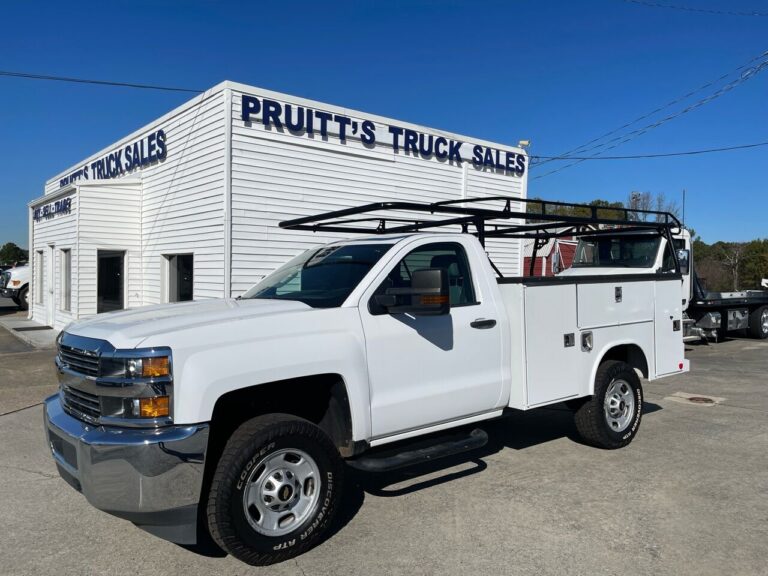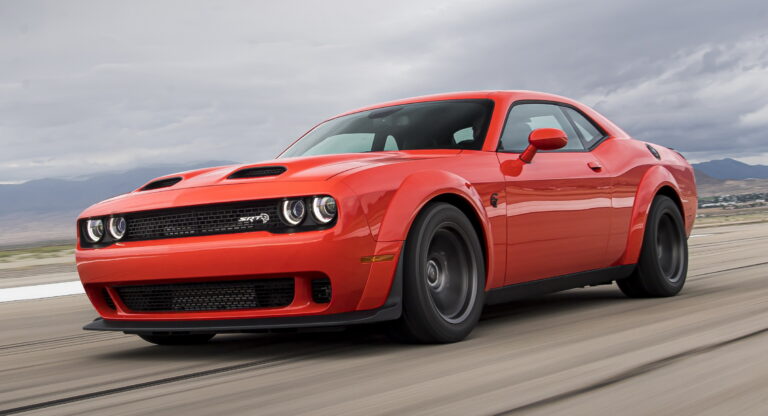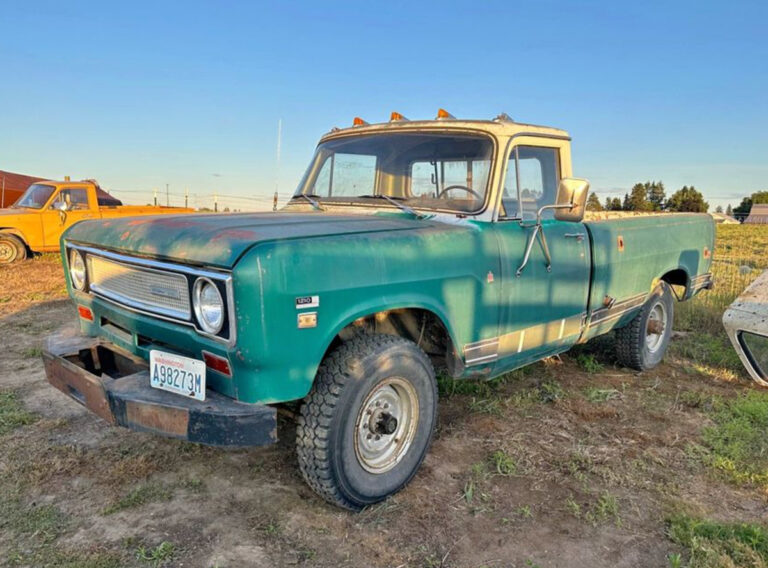Three Quarter Ton Trucks For Sale: Your Comprehensive Guide to Finding the Perfect Workhorse
Three Quarter Ton Trucks For Sale: Your Comprehensive Guide to Finding the Perfect Workhorse cars.truckstrend.com
In the world of pickup trucks, the "three quarter ton" category stands as a powerful sweet spot, bridging the gap between the everyday utility of a half-ton and the heavy-duty might of a one-ton. Officially classified as "250/2500 series" trucks, these vehicles are engineered for serious work, offering significantly increased towing and payload capacities compared to their lighter counterparts, without the often cumbersome size or higher operational costs of a dually. For individuals and businesses alike seeking a robust, reliable, and versatile machine that can haul substantial loads, tow large trailers, and tackle challenging jobs, exploring three quarter ton trucks for sale is an essential first step.
This comprehensive guide will delve into everything you need to know about 3/4-ton trucks, from understanding their capabilities to navigating the buying process, ensuring you make an informed decision and drive away with the perfect workhorse for your needs.
Three Quarter Ton Trucks For Sale: Your Comprehensive Guide to Finding the Perfect Workhorse
Understanding the 3/4-Ton Classification
The term "three quarter ton" is a historical leftover from an era when trucks were literally rated by their payload capacity in tons. While modern 3/4-ton trucks can carry and tow far more than 1,500 pounds (0.75 tons), the moniker stuck. Today, these trucks are typically found in the 8,501 to 10,000 pounds Gross Vehicle Weight Rating (GVWR) class.
Key distinctions and capabilities:
- Payload Capacity: While the name suggests 1,500 lbs, contemporary 3/4-ton trucks typically boast payload capacities ranging from 2,500 lbs to over 4,000 lbs, depending on configuration and engine. This allows them to comfortably handle heavy loads in the bed, such as pallets of materials, large toolboxes, or slide-in campers.
- Towing Capacity: This is where 3/4-ton trucks truly shine. With reinforced frames, heavy-duty suspensions, and powerful engine options (often including robust diesels), these trucks can tow conventional trailers weighing anywhere from 12,000 lbs to over 20,000 lbs. They are also well-suited for fifth-wheel and gooseneck towing, making them ideal for large RVs, horse trailers, and commercial equipment.
- Comparison to Other Classes:
- 1/2-Ton (150/1500 Series): Great for everyday driving, lighter hauling, and recreational towing (up to 12,000 lbs). Less robust suspension and powertrain for continuous heavy work.
- 1-Ton (350/3500 Series): Designed for maximum capacity, often featuring dually (dual rear wheel) options for ultimate stability and payload. Overkill for many users, higher purchase and running costs.

A 3/4-ton truck strikes a balance, offering significant capability without the bulk or expense of a full-blown one-ton.
Benefits of Owning a 3/4-Ton Truck
Choosing a 3/4-ton truck offers a compelling array of advantages for those with demanding requirements:
- Superior Capability: The most obvious benefit is their ability to handle heavier payloads and tow larger trailers than a half-ton. This means fewer trips, greater efficiency, and the capacity to tackle jobs that lighter trucks simply can’t.
- Enhanced Durability and Longevity: Built with stronger frames, larger brakes, heavy-duty axles, and more robust powertrains, 3/4-ton trucks are designed for continuous heavy use. This translates to greater reliability and a longer service life, especially for those who work their vehicles hard.
- Power and Performance: With a wider range of powerful gasoline and high-torque diesel engine options, 3/4-ton trucks deliver impressive acceleration and effortless pulling power, even under full load.
- Versatility: Beyond work, these trucks are excellent for serious recreational use, such as towing large boats, toy haulers, or fifth-wheel RVs. Many models also offer comfortable interiors and advanced features, making them suitable for daily driving despite their size.
- Safety and Stability: The heavier construction and more robust suspension systems contribute to a more stable and controlled ride, especially when towing or hauling. Larger brakes provide confidence-inspiring stopping power.
Key Considerations When Buying a 3/4-Ton Truck
Navigating the market for three quarter ton trucks for sale requires careful thought. Here are the crucial factors to weigh:
- New vs. Used:
- New: Benefits from the latest technology, warranty, and customization options. Higher initial cost and depreciation.
- Used: Significant savings, a wider variety of models/generations, and slower depreciation. Requires more diligent inspection and research into maintenance history.
- Engine Type: Diesel vs. Gasoline:
- Diesel: Higher torque for towing/hauling, better fuel economy when heavily loaded, exceptional longevity (often 300,000+ miles). Higher purchase price, more expensive maintenance, higher fuel cost per gallon. Ideal for frequent heavy towing.
- Gasoline: Lower purchase price, simpler maintenance, often cheaper fuel per gallon. May struggle with extreme loads or long-distance heavy towing. Good for occasional heavy use or lighter duties.
- Drivetrain: 2WD vs. 4WD:
- 2WD (Two-Wheel Drive): Cheaper to buy, lighter, slightly better fuel economy. Suitable for paved roads and light-duty off-road use.
- 4WD (Four-Wheel Drive): Essential for off-road work, slippery conditions (snow, mud, sand), or launching boats. Adds to purchase price, weight, and complexity.
- Cab Configuration:
- Regular Cab: Two doors, single row of seats. Lightest, shortest, most affordable. Best for pure work truck.
- Extended/Quad Cab: Smaller rear doors, limited rear seat space. Good for occasional passengers or secure interior storage.
- Crew Cab: Four full-size doors, spacious rear seats. Ideal for families or work crews. Heaviest, longest, most expensive.
- Bed Length:
- Short Bed (approx. 6.5 ft): More maneuverable, but less cargo capacity.
- Long Bed (approx. 8 ft): Maximum cargo space, essential for full sheets of plywood or certain fifth-wheel hitches. Less maneuverable.
- Trim Levels and Features: From basic work trucks with vinyl seats to luxurious Lariat, Denali, or Limited trims with leather, advanced infotainment, and driver-assist features. Match the trim to your budget and desired comfort/utility.
- Towing and Payload Capacity: Crucially, match the truck’s published capacities to your maximum anticipated loads. Don’t just rely on the "3/4-ton" label; check the specific truck’s door jamb sticker (GVWR, GAWR) and owner’s manual for precise figures.
- Maintenance and Running Costs: Factor in fuel costs (especially for diesel), insurance, tire replacement (heavy-duty tires are more expensive), and routine maintenance. Parts for heavy-duty trucks can also be pricier.
- Inspection and History (for used trucks): A pre-purchase inspection by a trusted mechanic is non-negotiable. Obtain a vehicle history report (CarFax, AutoCheck) to check for accidents, salvage titles, flood damage, and odometer discrepancies. Review service records if available.
Popular Three Quarter Ton Truck Models
The 3/4-ton segment is dominated by a few key players, each with a loyal following:
- Ford F-250 Super Duty: Known for its robust Power Stroke diesel engine, impressive towing capabilities, and a wide range of trim levels from basic XL to luxurious Platinum.
- Ram 2500: Features the legendary Cummins diesel engine, a coil-spring rear suspension (on most models) for a surprisingly smooth ride, and class-leading interior luxury in higher trims.
- Chevrolet Silverado 2500HD: Offers a powerful Duramax diesel and sturdy gasoline V8 options, known for its strong work ethic and straightforward design.
- GMC Sierra 2500HD: Essentially a more premium version of the Silverado 2500HD, sharing its mechanicals but offering unique styling cues, higher-end interior materials, and exclusive features like the MultiPro tailgate.
Each of these models offers a compelling package, and your choice will likely come down to brand preference, specific feature sets, and available deals.
Where to Find Three Quarter Ton Trucks For Sale
The market for 3/4-ton trucks is extensive:
- Dealerships: Both new and used truck dealerships offer a wide selection, often with financing options and warranties (for new or certified pre-owned).
- Online Marketplaces: Websites like AutoTrader, Cars.com, CarGurus, and eBay Motors allow you to browse thousands of listings from both dealerships and private sellers.
- Private Sellers: Often offer lower prices than dealerships, but require more vigilance in terms of inspection and negotiation. Facebook Marketplace and local classifieds are common platforms.
- Auctions: Public and dealer auctions can yield great deals, but typically require significant expertise to identify good buys and avoid costly mistakes.
Tips for a Successful Purchase
- Define Your Needs: Be crystal clear about your primary use case (towing, hauling, daily driving, off-roading). This will guide your engine, cab, and bed choices.
- Set a Realistic Budget: Include not just the purchase price, but also taxes, registration, insurance, and potential immediate maintenance/upgrades.
- Research Thoroughly: Read reviews, compare specifications, and watch video walk-throughs of models you’re considering.
- Get a Pre-Purchase Inspection (PPI): For used trucks, this is critical. A qualified mechanic can uncover hidden issues that might cost thousands down the line.
- Test Drive Extensively: Don’t just drive around the block. Take it on highways, over bumps, and, if possible, with a load similar to what you’ll be carrying or towing. Pay attention to steering, braking, engine performance, and transmission shifts.
- Negotiate Effectively: Be prepared to walk away if the deal isn’t right. Research market values to ensure you’re getting a fair price.
- Check VIN and Service Records: Verify the VIN matches all documents. Request service history to understand past maintenance and potential issues.
Challenges and Solutions
While 3/4-ton trucks are incredibly capable, they do come with certain challenges:
- High Initial Cost: Especially for new diesel models.
- Solution: Explore the robust used market, consider gasoline engines, or secure competitive financing.
- Fuel Economy: While better when loaded, they consume more fuel than lighter vehicles in daily driving.
- Solution: For diesel, fuel economy improves under load. Drive conservatively. Ensure the truck is properly maintained for optimal efficiency.
- Maneuverability and Parking: Their size can make navigating tight spaces challenging.
- Solution: Opt for a short bed if possible, utilize parking sensors and backup cameras (common on modern trucks), and practice parking.
- Maintenance Costs: Heavier-duty components and diesel engines can mean higher repair bills.
- Solution: Adhere strictly to the maintenance schedule. For used trucks, a PPI can prevent immediate large expenses. Consider an extended warranty for peace of mind.
Price Guide: Three Quarter Ton Trucks For Sale
Prices for three quarter ton trucks vary significantly based on make, model, year, mileage, condition, engine type, trim level, and region. The table below provides general ranges to help set expectations.
| Category | Age Range | General Price Range (USD) | Key Factors Influencing Price |
|---|---|---|---|
| New Trucks | 2024-2025 | $50,000 – $90,000+ | Trim level, engine choice (diesel adds $9k-$12k), 4WD, package options, dealer incentives. |
| Late Model Used | 2020-2023 | $35,000 – $65,000 | Mileage, overall condition, trim, engine type, 4WD, maintenance history, accident history. |
| Mid-Age Used | 2015-2019 | $20,000 – $40,000 | Mileage, engine health (especially diesel), rust, accident history, major component wear. |
| Older/High Mileage Used | 2010-2014 | $10,000 – $25,000 | Overall mechanical condition, rust presence, verifiable maintenance records, specialized upfits. |
| Budget/Project Trucks | 2000-2009 | $5,000 – $15,000 | Requires significant work, very high mileage, specific known mechanical issues, regional demand. |
Note: These are general ranges. Exceptionally well-maintained or highly customized trucks may fetch higher prices, while those needing significant repairs will be lower.
Frequently Asked Questions (FAQ)
Q1: What’s the main difference between 1/2-ton, 3/4-ton, and 1-ton trucks?
A1: The primary difference lies in their Gross Vehicle Weight Rating (GVWR) and consequently, their payload and towing capacities. 1/2-tons are lighter duty (under 8,500 lbs GVWR), 3/4-tons are heavy-duty (8,501-10,000 lbs GVWR), and 1-tons are severe-duty (over 10,000 lbs GVWR, often with dual rear wheels).
Q2: Do 3/4-ton trucks require a special driver’s license?
A2: In most U.S. states, a standard Class D (or equivalent) driver’s license is sufficient for operating a 3/4-ton truck for personal use, as their GVWR typically falls below the 26,001 lbs threshold for a Commercial Driver’s License (CDL). However, if you are using the truck for commercial purposes, or if your combined truck and trailer weight exceeds certain limits (usually 26,001 lbs GCWR), a CDL may be required. Always check your local Department of Motor Vehicles (DMV) regulations.
Q3: Are diesel 3/4-ton trucks always better than gasoline ones?
A3: Not always. Diesel engines offer superior torque for heavy towing and potentially better fuel economy when working hard. However, they come with a higher purchase price, more complex and expensive maintenance, and higher fuel costs per gallon. Gasoline engines are generally more affordable, simpler to maintain, and perform well for lighter duties or occasional heavy hauling. Your choice depends on your primary use case and budget.
Q4: What’s considered good mileage for a used 3/4-ton truck?
A4: For gasoline trucks, anything over 150,000-200,000 miles is considered high. For diesel trucks, especially those with well-maintained engines, 200,000-300,000 miles is not uncommon, and many go well beyond that. Condition and maintenance history are far more important than just mileage.
Q5: How much can a 3/4-ton truck typically tow?
A5: Modern 3/4-ton trucks can tow anywhere from 12,000 pounds for base gasoline models up to over 20,000 pounds for top-tier diesel configurations with proper equipment. Always check the specific truck’s towing guide and door jamb sticker for exact capacities.
Q6: What should I look for when inspecting a used 3/4-ton truck?
A6: Beyond a general visual inspection, pay close attention to the frame for rust or damage, suspension components (shocks, leaf springs, bushings), tires for even wear, fluid leaks, exhaust system condition, and any unusual noises during a test drive. Check for proper functioning of 4WD, lights, and all electrical components. An expert pre-purchase inspection is highly recommended.
Conclusion
Three quarter ton trucks for sale represent a formidable class of vehicles, perfectly suited for those who demand more capability than a half-ton can offer but don’t require the extreme capacity of a one-ton. Whether you’re a contractor needing to haul tools and materials, an RVer looking to tow a large fifth-wheel, or simply someone who appreciates robust engineering and dependable performance, a 3/4-ton truck can be an invaluable asset. By understanding their unique characteristics, carefully considering your specific needs, and approaching the buying process with thorough research and smart decisions, you can confidently find a three quarter ton truck that will serve you reliably for years to come.





